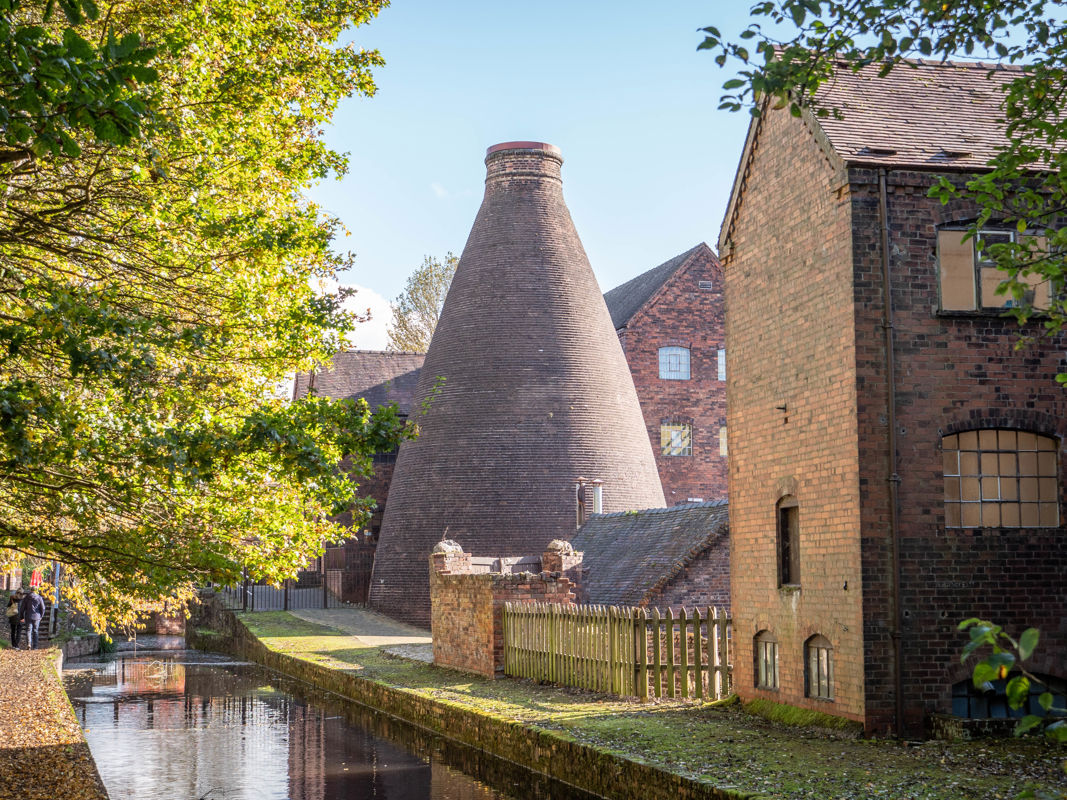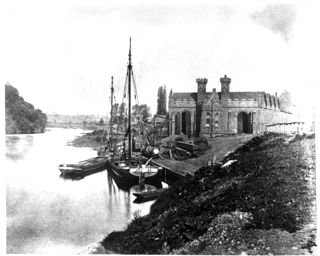The Conserving the Historic Estate Project
The Conserving the Historic Estate (CHE) project is a three-year programme of conservation work across the Ironbridge Gorge Museum Trust's sites to repair some 35 buildings in its care.
The works have been funded by £5.5 million given by the National Heritage Memorial Fund (NHMF). The programme began in February 2023 and is due to be completed in February 2026.
-
![Blists Hill Brick & Tile Works 2]()
The Ironbridge Gorge Museum Trust cares for a large estate of internationally important heritage buildings that require regular maintenance and repair. A Quinquennial Review carried out by Oliver Architecture in 2021 to better understand the condition of our estate allowed us to identify a programme of maintenance and repair work for our most important heritage assets.
-
![Coalport China Museum 10]()
To carry out the repair programme they advised we bid for additional funding and in 2022, we were successful in securing £5.5 million from the National Heritage Memorial Fund (NHMF). This funding allowed us to start on the three-year Conserving the Historic Estate programme and repair some 35 buildings in our care. The work ranges from removing vegetation and external redecoration of buildings to re-roofing and stabilisation works.
-
![Bedlam Furnace 2]()
The project focuses on the heritage buildings in our care, in their original environment within the Ironbridge Gorge World Heritage Site. The main concentration of buildings and structures are to be found at Coalbrookdale, Coalport, Jackfield and Blists Hill (Madeley) but there are several structures and monuments situated throughout the Gorge including five Scheduled Monuments, one Grade 1 Listed structure, 10 Grade II*Listed structures and 19 Grade II Listed structures all within an area of 5.5km2.
-
We created a dedicated project team to manage and deliver the project. We have also recruited a project maintenance team to undertake some of the work, developing skills that will be beneficial to the Trust long term. Thanks to the CHE project, the Trust's heritage assets will be in a good state of repair, which will provide a sound base for future maintenance. We also secured a further £4.5 million from NHMF for an endowment to generate income for ongoing maintenance beyond the three years of the project.
Current projects
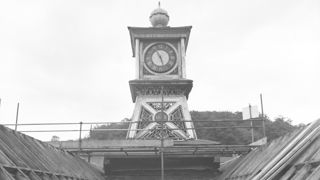
Coalbrookdale Museum of Iron
In October 2024, conservation work began at Coalbrookdale Museum of Iron.
We began by repairing the wooden structure of the museum’s iconic clocktower, before redecorating the clocktower and the clockface. The surrounding panels will be weather proofed, as will the clocktower base coverings, which will be replaced with durable lead.
On the roof we will replace disintegrating concrete ridge tiles and vents with new lead ones and replace valley and parapet gutter linings with durable terne-coated stainless steel.
The cast iron rainwater goods, window heads and sills will be overhauled and redecorated. The exterior of the building will be fully redecorated and the brickwork, copings, parapets and wall heads will be repointed.
These works will make the building weatherproof in the face of increasing heavy rainfall and by using durable materials will reduce maintenance costs in the future.
Image shows the clocktower c. 1979.
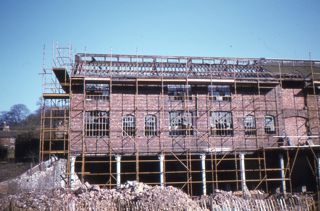
The Long Warehouse
Once the conservation work at Coalbrookdale Museum of Iron has been completed, we will begin working at the Long Warehouse.
We will re-roof the Long Warehouse building and replace the lantern roof with one in terne-coated stainless steel. We will renew the gutter linings, flashings and weatherings to the rear parapet of the Long Warehouse and on the North Lights building behind it.
We will replace defective fascia boards and repair and repaint the cast iron rainwater goods. The whole exterior of the building will be redecorated using a decorative scheme based on colours used in the 1880s.
Image shows the Long Warehouse undergoing a previous phase of conservation work in 1982.
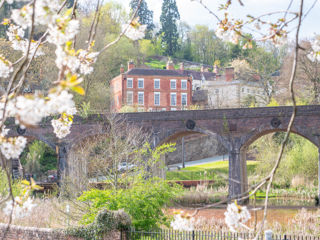
The Darby Houses
The conservation work at the Darby Houses will focus on external repairs to address the poor state of decoration and leaks in the roof.
We will be removing vegetation and repointing open masonry joints. On the roof we will replace defective tiles and relay sections.
Areas of lead work will be repaired, redressed and where necessary replaced. Gutters will be cleared of debris and redecorated, or replaced as needed.
Windows and door surrounds will be redecorated, and the external walls of Rosehill House will be repainted.
This work will ensure the buildings are protected from elements and are watertight for many years to come.
Completed projects
The Museum of the Gorge
In September 2023 we completed external repairs to the Museum of the Gorge. This involved repairs to the roof, including replacement of valley gutters, and rebuilding the pitched roof on the ‘Lady Chapel’ office. Thanks to additional fundraising, we were also able to commission and install replicas of the ornate chimney pots.
The building re-opened to the public on 31 January 2024. It serves as an information point for visitors to the Ironbridge Gorge and there is a display about the building’s history and the work that has taken place. During 2024 we will be developing plans for a full internal refurbishment with the aim of creating a visitor centre for the UNESCO World Heritage Site.
The Boy and Swan Fountain
The Boy and Swan Fountain, situated on the green at Coalbrookdale, underwent extensive conservation repair during 2023. The metal work was repaired and repainted to protect it for the next 10 years.
Cast by the Coalbrookdale Company in 1851 for the Great Exhibition where it stood in a prominent position in front of the gates which separate Hyde Park from Kensington Gardens, the Boy and Swan eventually returned to Coalbrookdale and was re-erected opposite the Old Furnace.
The fountain was reinstalled in the summerof 2024.
A selection of buildings at Blists Hill
St Chads Mission Church has been fully restored and repainted to bring it back to its 1900s glory.
The Shelton Toll House has undergone repairs including reinstating the soffits and fascia boards that had been lost, redecorating the interior and creating a small lean-to to the rear to protect the laundry area.
External repairs have been completed on the School, with slipped tiles replaced, windows repainted and rainwater goods restored, and the interior has been redecorated.
The Forest Glen pavilion has been redecorated and the lettering to the roof restored, which included moss clearance and vegetation removal. The interior was also cleaned, which highlighted the painted ivy decoration on the pillars.
The Estate Office building has been redecorated and roof repairs carried out, as well as some internal redecoration.
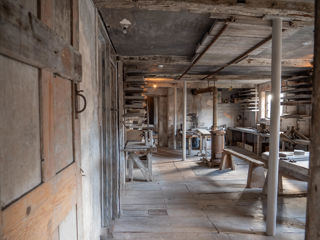
Broseley Pipeworks
At Broseley Pipeworks we restored and conserved the woodwork and repaired the roof, all without impacting on the unique character of the site.
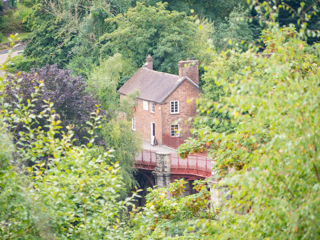
The Iron Bridge Tollhouse
Work recently took place at the Iron Bridge Tollhouse.
We redecorated the doors and windows, replaced roof tiles and repointed brick work.
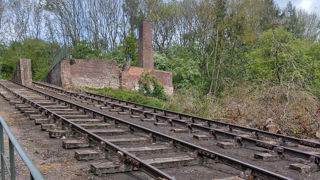
The Hay Inclined Plane
Work to repair and conserve this Scheduled Ancient Monument at Blists Hill Victorian Town has recently been completed.
Between May 2024 and April 2025 work took place clearing vegetation and removing self-seeded trees within the canal basin, cleaning graffiti, and removing the failing concrete capping to replace it with soft turf capping. At the same time we carried out repairs and repointed the Winding House, Dock and bridge over the Silkin Way. The visitor steps to the top of the plane have been repaired and a new handrail installed.
Visitors can now walk around the Hay Inclined Plane. A self-guided itinerary is available to download here. Guided walks led by volunteers also take place. Look out on the webpage for Blists Hill Victorian Town for details.
Image shows the Hay Inclined Plane in 1968.
MEND logo alongside**

GET INVOLVED
If you are interested in learning more about our project and how we will be working to repair these important buildings please get in touch with us.
We are also very keen to hear from anyone who would like to volunteer to help us look after these fabulous buildings. If you would like to get involved please send us a message.
See the Completed Projects tab for information about specific projects.
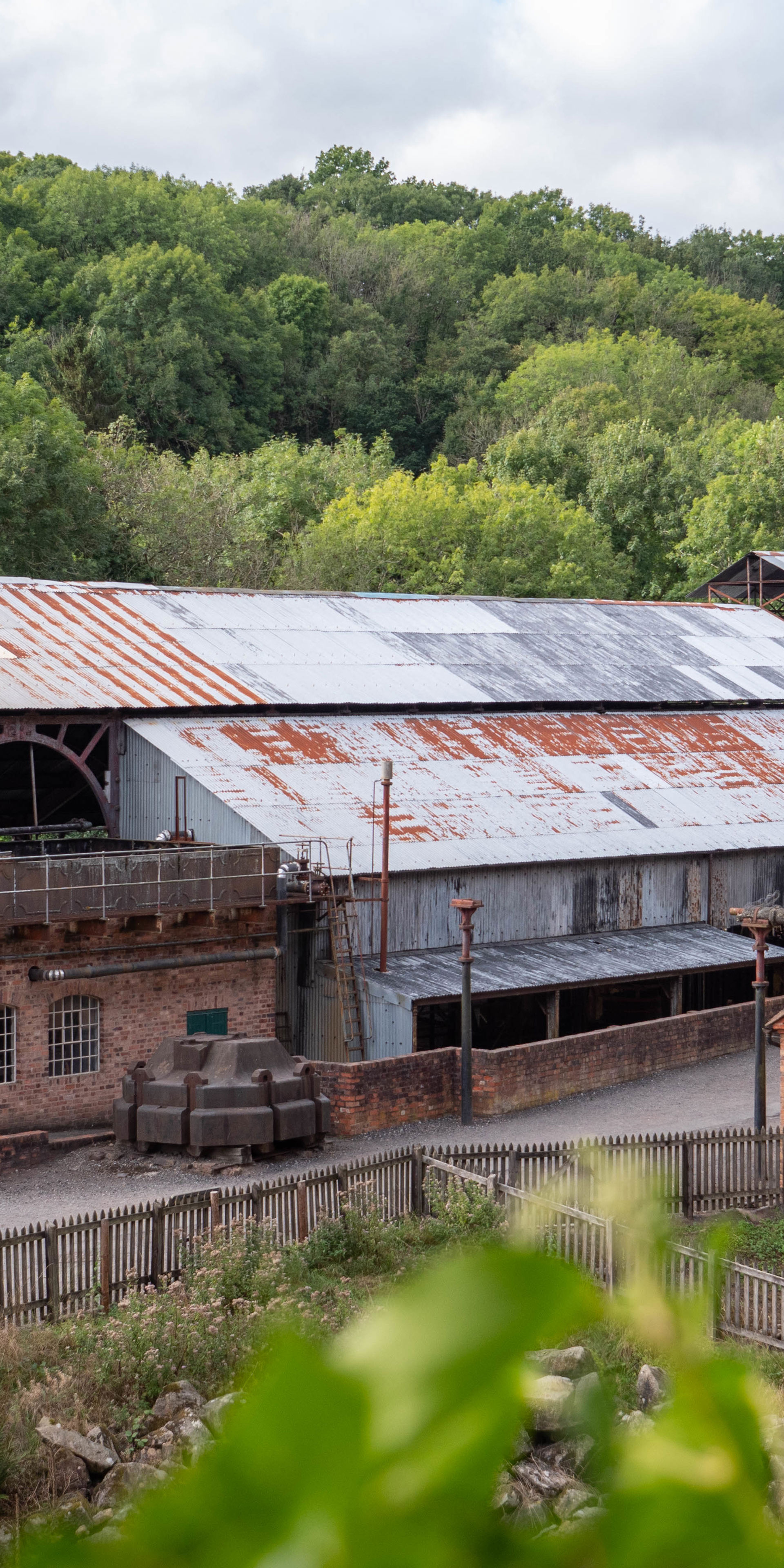
Sign up to our mailing list
Register your email with us and we’ll keep you up-to-date with news, events and offers.


